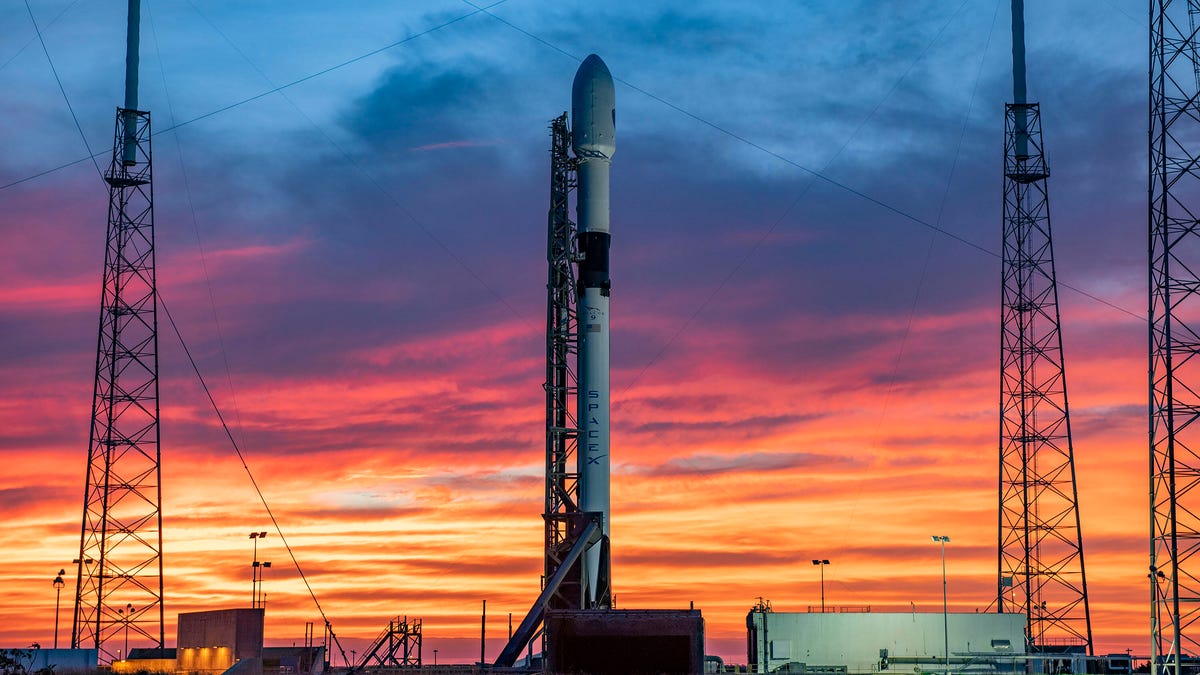One rocket launches a quarter of SpaceX Starlink satellites, and it's not done
A Falcon 9 tied a record Tuesday while proving a point for Elon Musk.

A Falcon 9 stands ready for launch.
For almost two decades now, SpaceX has been out to prove rockets should be treated more like airplanes than candy wrappers. In other words, they should be reusable. The company's latest Starlink launch illustrated just how successful Elon Musk has been in reaching this goal.
On Tuesday, SpaceX successfully launched and landed another Falcon 9 rocket in what has become a very routine type of mission to send another batch of 60 Starlink broadband satellites into low-Earth orbit. This was the 26th such launch primarily dedicated to Starlink if you count the first group of early test satellites launched in May 2019 (and leave out the Transporter-1 rideshare that carried just 10 Starlinks).
But what's perhaps most remarkable is the first-stage booster that lifted off from Cape Canaveral in Florida just after noon PT and landed about eight minutes later on a droneship in the Atlantic. It was the same Falcon 9 first-stage that has already flown on eight other missions, meaning this was a record-tying ninth career flight. The current record holder for most launches and landings is naturally a different Falcon 9.
The booster (listed as B1049) flew its seventh Starlink mission Tuesday, which means B1049 is responsible for launching more than 25 percent of all Starlink satellites ever launched, all by its lonesome.
Falcon 9’s first stage has landed on the Of Course I Still Love You droneship – the 9th landing of this booster pic.twitter.com/wzPjMsu2z3
— SpaceX (@SpaceX) May 4, 2021
And the booster that B1049 now shares the total launch record with, B1051, is responsible for 23 percent of Starlink. (It is set to make a record tenth flight within a week.) So together, just two Falcon 9 rocket boosters have managed to lift nearly half of the more than 1,500 Starlinks launched to date.
Clearly, rockets really can be recycled.
As if B1049's Starlink service weren't enough, it also flew two larger satellite missions before the first Starlink launch. We'll see how much more life this single high-powered candle has left in it.
You can re-watch its ninth career launch right here via the feed above.
Follow CNET's 2021 Space Calendar to stay up to date with all the latest space news this year. You can even add it to your own Google Calendar.

